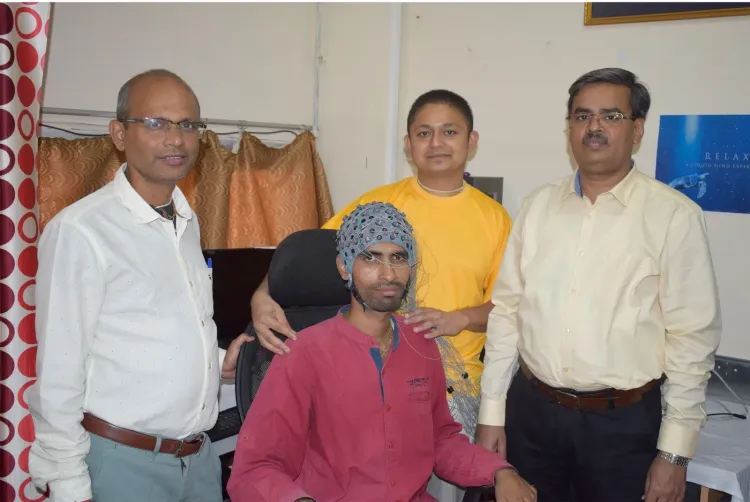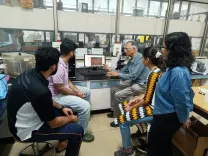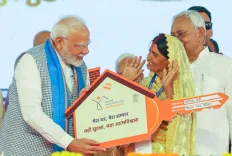Can Listening to Indian Ragas Boost Attention and Mental Stability?

Synopsis
Key Takeaways
- Indian classical ragas can enhance attention and emotional regulation.
- The study highlights music as a non-invasive therapeutic tool.
- Advanced EEG microstate analysis was used to study brain activity.
- Raga Darbari and Raga Jogiya showed significant effects on mental stability.
- The research indicates a potential new path for addressing mental health challenges.
New Delhi, June 30 (NationPress) In the face of increasing mental health issues like stress, burnout, and attention deficits, a recent investigation by the Indian Institute of Technology (IIT) Mandi revealed that listening to traditional Indian classical ragas may significantly enhance attention, emotional regulation, and overall mental stability.
This research, conducted in partnership with IIT Kanpur, provides scientific backing for the use of music as a therapeutic intervention that is both culturally relevant and non-invasive.
The study involved 40 participants who listened to various ragas, employing cutting-edge electroencephalogram (EEG) microstate analysis to capture brief but critical neural activity patterns in real-time.
Published in the journal Frontiers in Human Neuroscience, the results indicate that listening to Raga Darbari—recognized for its calming and uplifting effects—before exams or crucial meetings can enhance concentration, while Raga Jogiya, a more melancholic tune, may assist in coping with emotional distress or grief.
The changes in neural activity observed were not coincidental, emphasized Dr. Ashish Gupta, the leading author and Assistant Professor at IIT Mandi.
“The findings demonstrated repeatable and consistent transitions after exposure to the ragas, indicating that Indian classical music can be an effective method for promoting mental wellness. The EEG data clearly showed that after listening to music, the brain transitioned to more stable and functional patterns compared to silence,” Gupta noted.
The EEG test utilized small metal electrodes known as “microstates,” which typically last mere milliseconds and showcase the brain's transient operational modes, including attention, emotional engagement, or mind-wandering.
Brain cells communicate through electrical signals, and this activity is depicted as wavy lines on an EEG recording.
The study uncovered that Raga Darbari and Raga Jogiya can fundamentally transform EEG microstates, revealing fleeting yet powerful neural patterns that signify attention, emotion, and cognitive processing.
“EEG microstates offer insights into brain functionality, such as attention, emotional engagement, or mind-wandering. Our findings suggest that ragas not only elicit feelings but also actively reprogram the brain in real time. It's astounding to witness how these ancient melodies consistently steer the brain towards more stable and focused patterns,” stated Prof. Laxmidhar Behera, Director of IIT Mandi.
The research also indicated an overall improvement in brain stability among participants, with microstates becoming longer and more grounded, reflecting a calmer and more focused mind.









